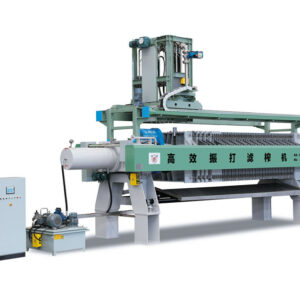A belt filter press is a type of industrial dewatering equipment used to separate solids and liquids. It consists of a belt made of permeable material that moves over a series of rollers. As the belt travels, the material being filtered is applied to the moving belt. And pressure is applied to squeeze out liquid from the solid material. Now we will list the complete methods below:
The belt filter press is installed and the filter media is installed. The belt is tensioned and the hydraulic system is checked and calibrated to ensure it is functioning properly.
The suspension is pumped onto the filter media using a feed pump. The suspension flows through the filter media and onto the belt surface.
As the suspension passes through the filter media and onto the belt, the solids are retained while the liquid phase passes through the filter media and exits the belt filter press. Solids are washed and dewatered as they move along the belt surface.
Once the solids are sufficiently dehydrated, they can be removed from the conveyor belt using a scraper or scraper.

How To Design By Belt Filter Press Manufacturers
Belt filter press designs vary but generally include a belt filter press belts, frame, rollers, and slurry inlet and filtrate outlet. The belt filter press belts are made of special fabrics that allow liquids to pass through while retaining the solid material. The belts travel over rollers to form pressing zones where pressure is applied to squeeze out liquid.
Determine capacity and cake dryness requirements
Select Belt Filter Press Strip Material
Determine the number of drums and filter areas
Configure Roller Spacing and Angle
Design Belt Return and Spray Systems
Choice of electric or hydraulic drive and controls
Consider accessories to improve operation
Provide proper structural support and safety features
Detail About Continuous Belt Filter Press
Belt filter presses can be continuous belt filter presses where the belt moves endlessly over the rollers, or batch presses where the belt stops periodically for unloading. Continuous belt filter presses are more popular due to their higher throughput and less manual labor required.
Continuous belt filter press belts are a key part of the design. The proper belt material selection depends on factors like the particle size, acidity or alkalinity of the slurry, and desired dryness of the filter cake. According to belt filter press manufacturers, common belt materials include polyester, nylon, and rubber. The longer belt filter press belts last, the lower the overall operating costs.

